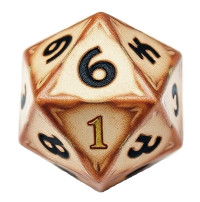“Why would Vikings use a sword over an ax. The ax has a better reach and is so much cheaper.”
-Bob, after watching Andreas “Bull” Hansen using a poleaxe
…
The sword was called “the Queen of weapons” in antiquity. It was what the conqueror wielded to execute an already beaten foe, most clearly documented in Thucydides and Xenophon. It was the chosen means of capital punishment throughout the ages and across the nations.
Primarily, the sword was a back up weapon for the horseman and the shield man. The shield is the prime weapon of muscle powered warfare, as it protects against arrows and stones and darts and other thrown and propelled missiles. It is also well designed, in most configurations, for breaking the hafts and shafts of spears and axes and other weapons.
A sword is an ideal back up weapon as it can be sheathed close to the body, under the shield. It is also more effective in close work than the ax or spear, as the blade navigates around the shields of the swordsman and his foe very dexterously compared to other weapons. In fact, as first illuminated by John Clements, the hand guard of a sword is originally intended to protect the sword hand from the shield.
The sword has three origins:
-the knife
-the club
-the paddle or oar
The sword is either the lengthening of a knife or the tapering and shaping of a club. As such, it is to the club what the ax is to the hammer; the refinement of a blunt impact weapon into a cleaving or cutting tool according to the mechanics of the wedge, what the first stone hand axes were to the hand held stone.
Take a heavy stick, and shape it into something like a paddle or an oar, and you have an improvement in impact and handling similar to that of an ax handle over a bat. The bat will tend to roll off the target, while the paddle or ax handle will bite. Of interest, is that the ax handle is very much a proto-sword, a dexterous club. See Captain Sir Richard Francis Burton, The Book of the Sword, for a detailed illustrated discussion.
Think, Bob, back to me cutting that apple tree out alongside the road a couple of years back, of me breaking an ax handle with a missed stroke. Indeed, I would prefer having an ax handle in a fight against an ax man for better handling. Something about the weight on the end of the ax haft of the ax head, causes that haft to break more likely. When I threw tomahawks as a teen, we had this problem.
Now, as for tactics, the ax man against the swords man, wants to threaten the head, destroy the shield, [which is the base of operations for the sword more than it is for the ax] and cleave off the swordsman’s feet or leg below the shield.
The swordsman, wants to offer the head or leg, seeking to target the ax hand for cutting and the throat for stabbing and slicing [in case the stab misses, drawing back]. When the ax comes at the head, break the haft with the rim of the shield, rather than raising the shield to be wrecked. When the ax goes for the forward leg, shift that leg into reverse, plunge the shield edge down on the ax haft, and then either cut off the ax hand or thrust for the kill around the shield.
If the ax man has no shield and uses both hands, than it is very much about taking off the swordsman’s leg or pinning the haft by the swordsmen and taking off the ax man’s head.
Range favors the ax.
Close favors the sword.
The shield is the shelter of the sword and is vulnerable to the ax, head but dangerous to the ax haft.
In this fight, as a duel, mobility and timing wins the day.
In a battle line, the spear is best against the ax at first, and then once the ax man is past the spear point, the sword should be accessed.
In all of these permutations of ax versus sword, the shield is the key item.
The ax is favored by the larger and younger fighter.
The sword is favored by the smaller and older fighter, as it requires less energy and less strength.
The sword is the perfect aristocratic weapon, expensive, versatile, and good for close quarters. Recall that ancient and medieval war was about taking down the enemy chief and that the sword is a better defensive weapon than the ax, which owns the offense to the point of making its user an easier target then the swordsman.
I would guess, but do not know, that Norse and Germanic warriors were probably armed with axes over swords at about a 10 to 20 to 1 ratio.
But me, as an evil old twerp, I’ll take the sword.











